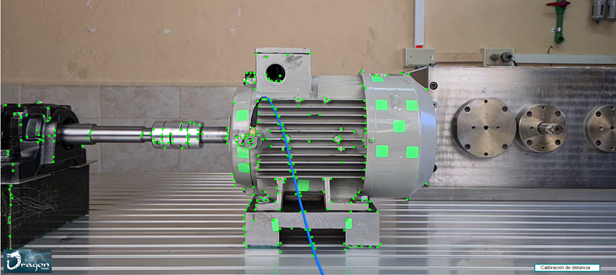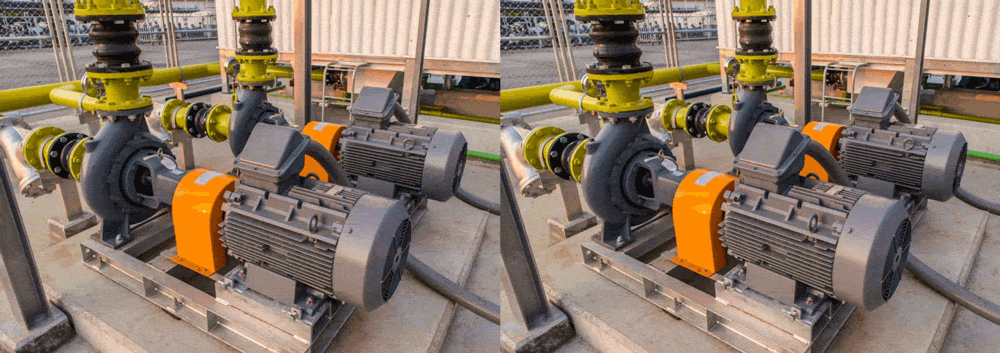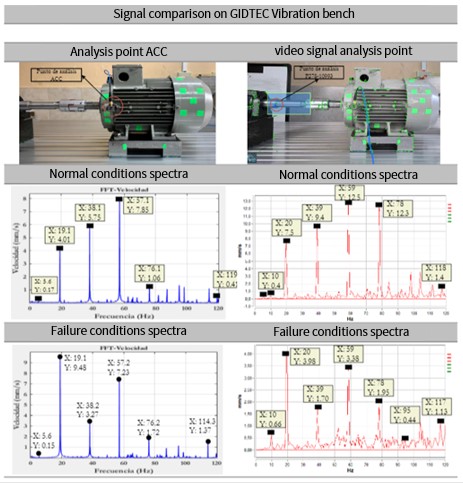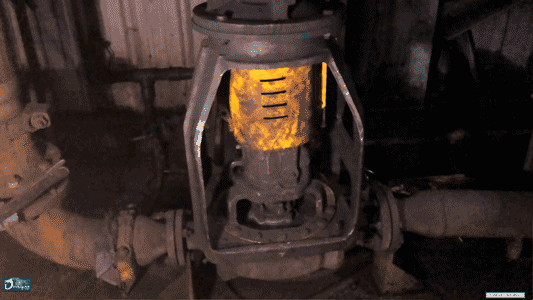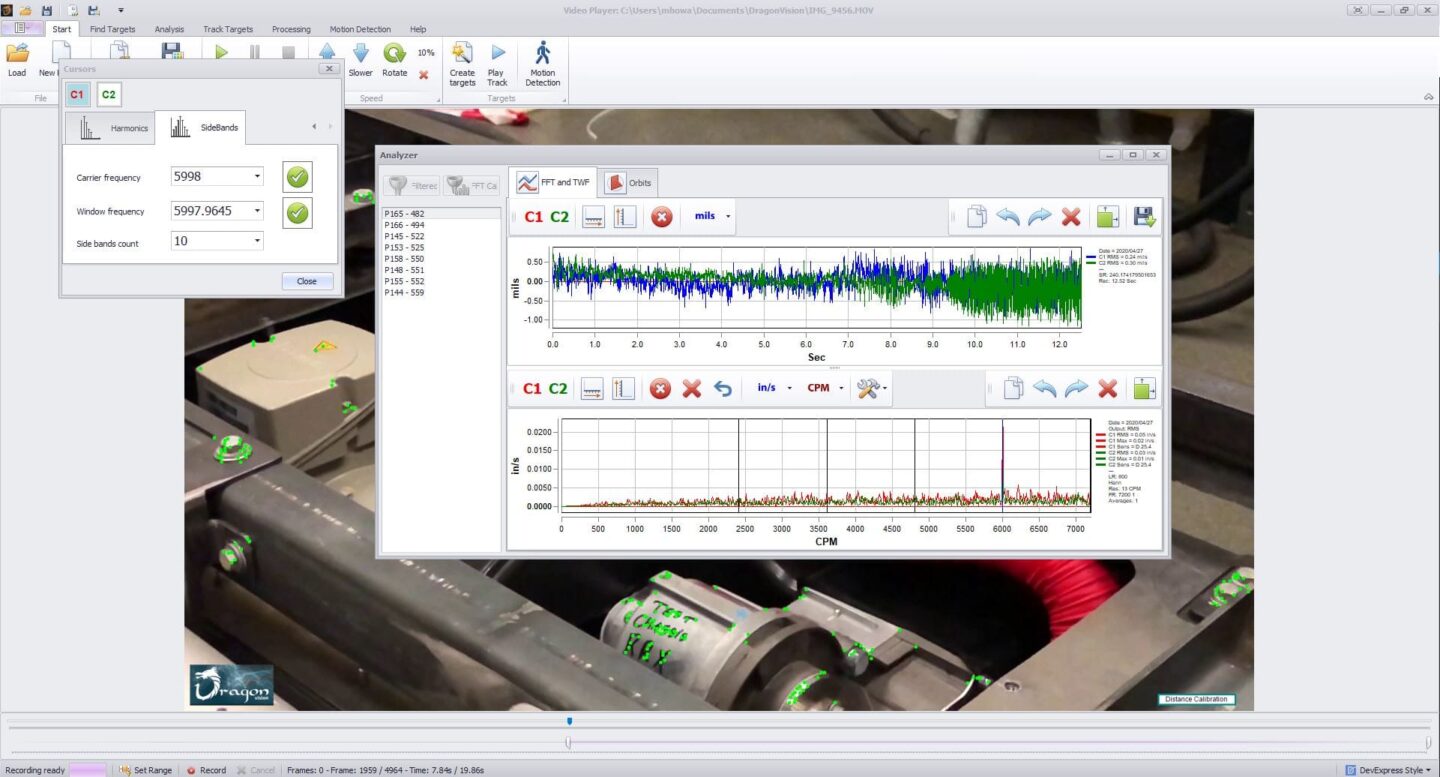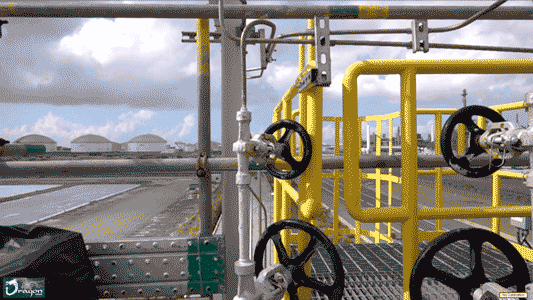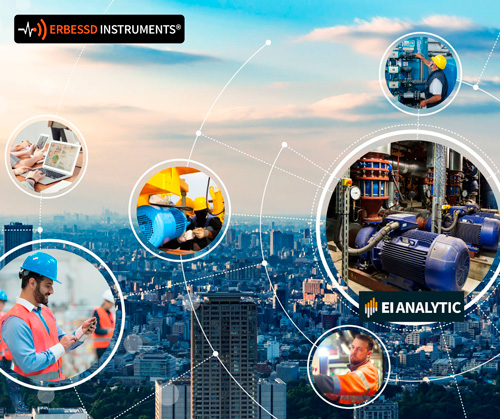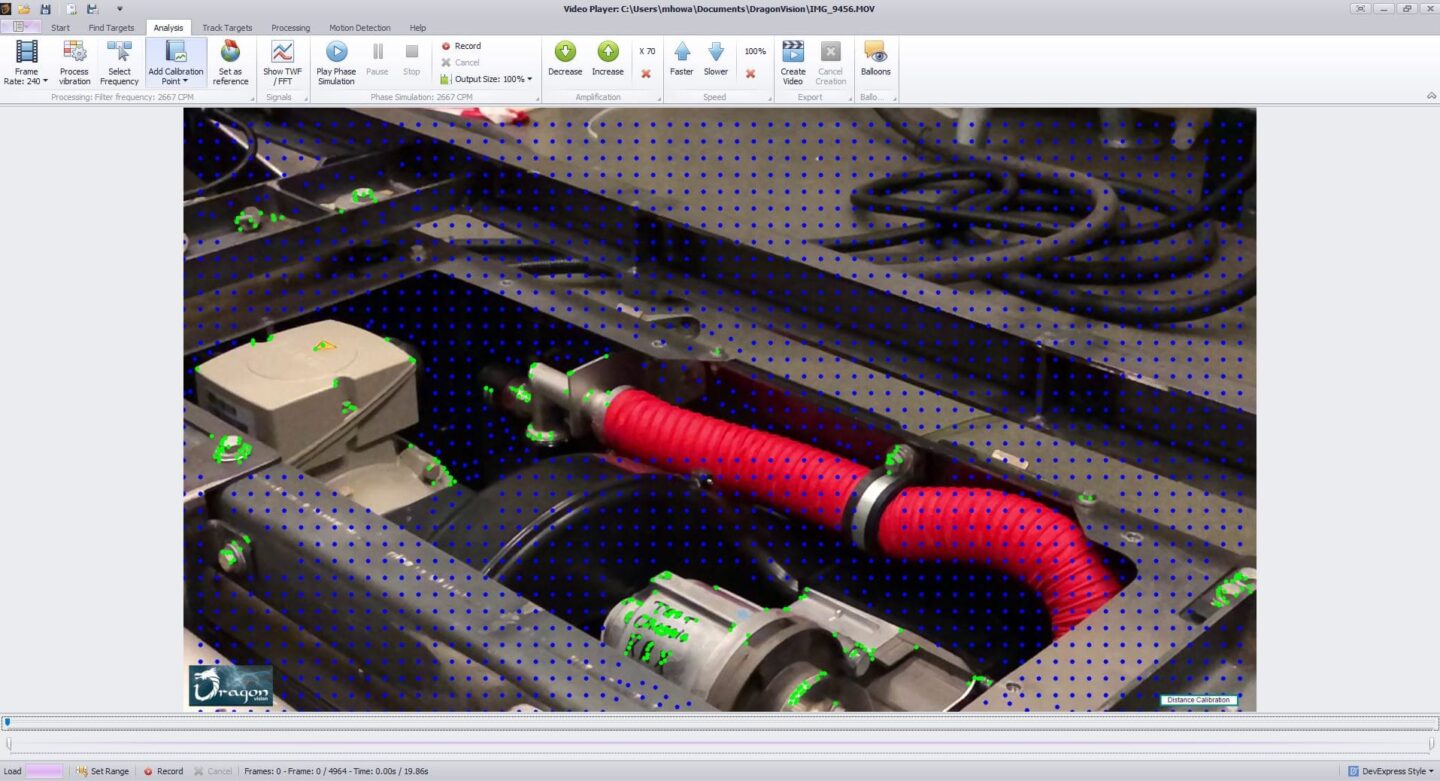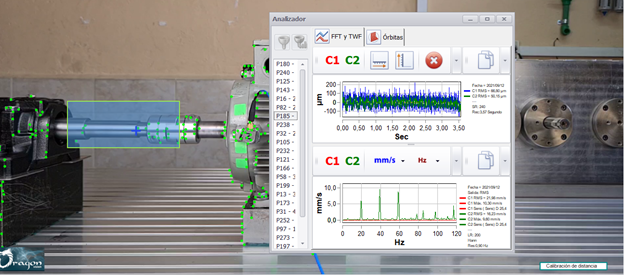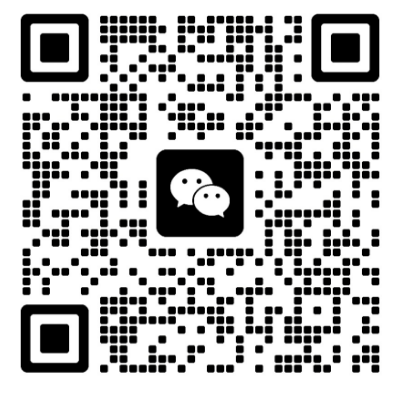Dragon Vision™振动视觉增强影像系统

Dragon Vision™ - Motion Magnification Software
Incredible as it may seem, machine and structural vibration (or at least a large part of it) can be detected in a video recording with incredible resolution. Our unique video analysis algorithms make it possible to detect micro-movements and convert these movements into thousands of reliable vibration signals from just one video. In addition, with our software it is possible to perform motion magnification, making it possible to visualize vibration in ways that the human eye can’t see.
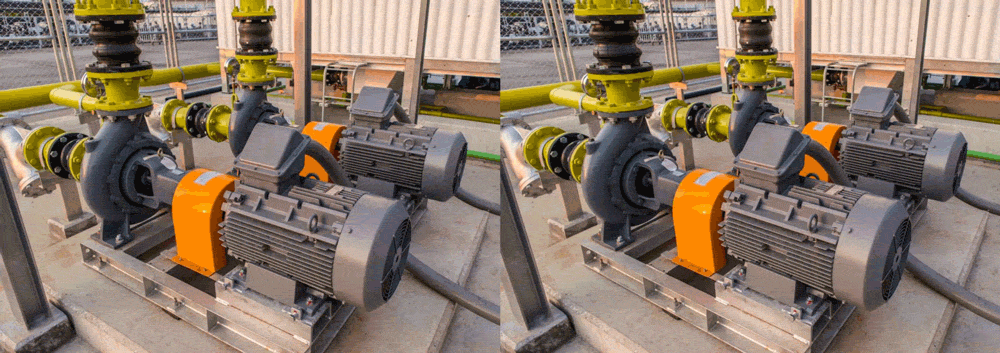
The looking Glass Technique for Motion Magnification
This new technique, named The Looking Glass Technique, saves a huge amount of man-hours in studies that were even impossible before. Inspired by the iconic U-2 Dragonlady Spy-plane which has flown high altitude reconnaissance missions worldwide for more than 60 years DragonVision™ allows you to see what many cannot and take the necessary actions to eliminate the threat to your machines, and facilities. DragonVision™ is available for Microsoft Windows® as well as the Apple’s iOS operating systems.
The future of vibration analysis has arrived. Learn what the Looking Glass Technique is capable of.
What is Dragon Vision™?
DragonVision™ Motion Magnification Technology is a Vibration Analysis software that tracks very small movements within ordinary video recordings. Through complex algorithms, DragonVision™ compares each one of the frames of the video looking for microscopic movements of specific points. Later, it subsequently converts the results into vibration signals. In fact, DragonVision™ can detect thousands of vibration points in a single video. Thus, making it an ideal tool for various types of vibration analysis that would otherwise take a long time to complete.
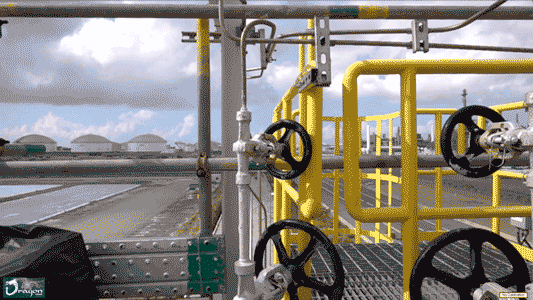
What kind of camera do I need for Dragon Vision™?
Any camera works for DragonVision™ for Windows. DragonVision for iOS utilizes the onboard camera from your iOS device and thus is limited to processing videos created within the same iOS device. Although, the better the quality of the recording, the better the results. In fact, tests made with a camera of an iPhone XS with slow motion recordings at 1 meter distance showed a resolution in amplitude of 0.1 thousandths of an inch (2.54 microns) and 120 Hz frequency (7,200 CPM). Which is very useful for 95% of common machines. Did you know that you have such a powerful vibration analyzer in your pocket?
What kind of failures can I detect using Motion Magnification?
There are many failures that can be detected with this technique. Mainly those related to low frequencies and phase. For example:
- Imbalance
- Misalignment
- Mechanical Looseness
- Bent Shaft
- Eccentricity
- Resonance
- Natural Frequencies (By bump test)
- Electrical Noise
![]()
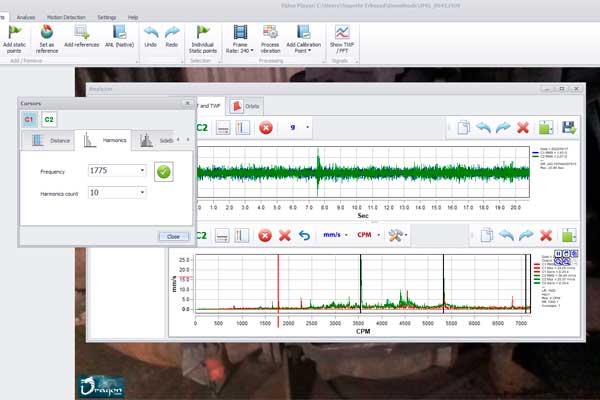
Wich tools do I have inside Dragon Vision™?
DragonVision allows you to use a wide range of vibration analysis tools. View the waveform and FFT of each point you detect in your video and use the most common vibration analysis tools such as:
- Harmonics
- Sidebands
- Band filters
- Windowing options
- Markers on the signal
And many more.
振动跟踪运动放大成像技术
什么是视觉增强影像系统?
该系统通过极高的视频采样率,来视频记录检测设备的振动。视觉增强影像系统是一种ERDM- INSTRUMENTS方法,将视频记录时获取的有意义的振动信号,并结合了频谱分析的方法,同时消除由混淆效应引起的频率。因此,在整个频谱上校准信号,使读数在频率和幅值上都更加可靠。这是一种独特的振动分析方法,在视频文件中使用首创的微运动跟踪算法。它仅用一次视频录制就可以同时检测和测量数千个点的振动。
这种振动分析的结果取决于视频记录的质量。同样,频谱中可见的最大频率与每秒拍摄的帧数有关。
视觉增强影像系统的技术优势?
视觉增强影像系统用户可以同时测量数千个点,如果使用传统方法会浪费大量时间。通过这种方式,您无需花费太多精力就可以更精确地分析结构,运动,变形和相位。同时,该技术允许用户导出放大的振动模拟,即使对于不是振动分析专家也很容易解释振动现象。
 视觉增强影像系统如何工作?
视觉增强影像系统如何工作?
此方法可以检测到的最小位移量远小于常规相机的像素大小。那么它是怎样工作的?
该方法的原理如下:在传统的相机中,检测对象从一个像素移动到另一个像素之前,它会在下一个像素中产生很小的颜色变化。实际上,来自两个像素的颜色会逐渐变化,直到物体完全占据了下一个像素传感器为止。
此方法测量每个像素(实际上是整个像素区域)的颜色变化量。首先,该软件可以识别预定义区域内的颜色模式。重要的是,这些图案必须具颜色差异,以便与其他图案区分开。目标区域由软件自动找到,用户只能修改某些质量参数和表面参数。
其次,对于每个视频帧,软件将识别目标点及其对应区域的平均颜色变化。因此,能够高精度地跟踪每个帧中的微小变化。
最后,所有获得的信息都将转换为振动信号,可以通过其FFT,相位或时间波形对其进行研究。
(图1:以3550 RPM跟踪振动点)

振幅的可靠性
为了获得可靠的振动值,必须有一个校准系统。所有相机都具有不同类型的镜头和分辨率,更不用说使用的变焦和拍摄视频的距离可以改变对运动的影响。
因此,系统需要比较校准才能达到可靠性。校准这些信号的最佳方法是使用加速度传感器。
有两种用于校准此类信号的比较方法:
通过RMS值:此方法需要使用常规振动计测量机器上的单个点。然后,软件将根据该点的RMS值进行比对校准。
通过交叉通道:此方法最准确,并且需要完整记录振动信号,以便软件以频谱(FFT)的形式对其进行处理。使用这种方法,该软件将能够分别校准每个频率,从而消除了由混叠效果可能产生的虚假频率。
(图2:从视频中获取频谱-谐波分析)
使用视觉增强影像系统可以诊断出哪些故障?
使用此技术可以检测到许多故障。主要与低频和相位有关。例如:
- 不平衡
- 不对中
- 机械松动,结构松动,结构裂纹
- 轴弯曲
- 软脚
- 偏心率
- 联轴器(膜片,齿式,橡胶,万向轴),链条,皮带,万向轴
- 自然频率(通过冲击测试)
- 扭振
- 电气噪音
- 共振
- 管道,管线,和设备基础刚性
- 模态测试
- 桥梁,建筑物,大型船舶,飞机微震测试
差分振动分析是一种非常罕见的研究类型,原因是目前的技术很难做到这一点。使用视觉增强影像系统,来实现非常容易,因为您只需要选择一个参考区域,即可自动从其余点中减去这些振动分量。
(图3:微分振动分析。将运动与图1进行比较。在这种情况下,红点对应于参考区域)


非接触式振动分析技术
在许多情况下,加速度传感器的质量会完全改变振动的行为。例如从质量较小的物品(例如电缆,很小的电动机,无线电控制飞机等)收集有意义的数据时,就是这种情况。
视觉增强影像系统完全消除了这个问题,因为它不使用传感器,所以被分析的物体会自然振动。
大型物体的振动分析
振动分析的另一个主要限制是大型物体,例如建筑物,桥梁,大型船舶,飞机。
振动分析技术的局限性
视觉增强影像系统是振动分析仪的绝佳补充,但仍不能替代,因为它仍然存在与最大频率和幅度分辨率有关的限制。
最大频率取决于相机每秒拍摄的帧数(帧频)。因此,最大可见频率将是帧速率的一半(对于可靠的幅度,它将是:帧速率/ 2.56)。
振幅分辨率将取决于相机的像素数量,以及从相机到物体的距离以及所使用的变焦。靠近被测物体时可获得更好的分辨率。
混淆:此类分析的另一个问题是无法避免混淆效应。通常,常见的振动分析仪使用内置在数据采集界面中的模拟滤波器来消除这种影响。但是,在视频中根本不可能做到这一点。Dragon结合了一种基于传统加速度计的校准方法,该方法可以分析频谱并消除由混淆效应引起的频率。因此,在整个频谱上校准信号,使读数在频率和幅度上都更加可靠。实际上,整个过程最多可减少相机本身固有的95%的底部噪音。
视觉增强影像系统中的过滤器
视觉增强影像系统包含多个用于分析视频的过滤器。如:
带通滤波器:它们允许对频谱区域进行滤波,以便同时跟踪多个频率的运动
单频滤波器:它们使您可以专注于特定频率以滤除振动分析过程中的其它故障。因此,您可以进行相位分析和特定的振动仿真。



